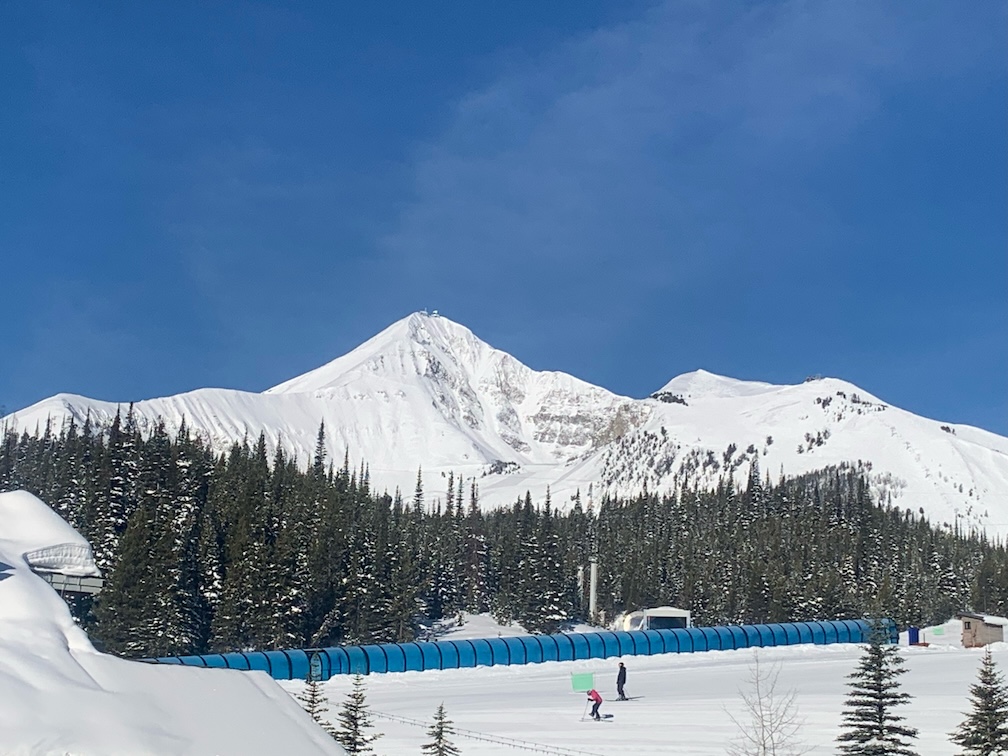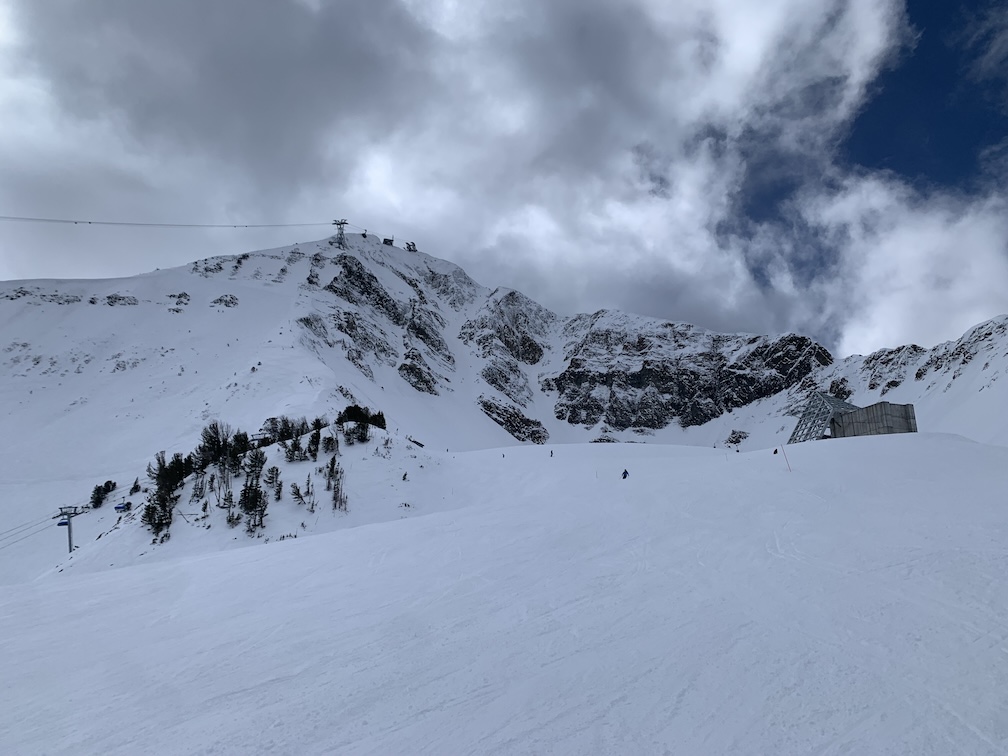posted: April 28, 2023
tl;dr: It’s going to take an awful lot of global warming to turn Montana into the next Colorado...
This year’s bucket-list ski trip with my brother was our first since 2019 that was not affected by the COVID-19 endemic. Our trip last year to Heavenly in Lake Tahoe was marred by aftereffects of the endemic response: many places were short-staffed, and some (including lifts) were closed or had reduced hours. Fortunately, everything in Montana in 2024 was in fine shape: restaurants were open, the ski runs were open, and the hotel we stayed at even had someone manning the front desk at all hours. All that remained from the endemic were the high prices from the great inflation.
Big Sky is a ski resort like no other I’ve skied at. I have never seen a resort with so much on-mountain housing. There are large houses halfway up the mountain, not just clustered around the base. Multiple trails have bridges for the skiers to pass over roads which wind their way up to the higher-elevation houses. There’s also a private, members-only area called the Yellowstone Club. Clearly, there are lots of folks with some serious money that show up at Big Sky in the winter to ski. And therein lies the challenge.
Big Sky is in Montana, two states north of Colorado, which means it can get very cold in the winter, although the weather is variable. In January and February, if you are unlucky, the temperature can be well below zero Fahrenheit, even as cold as -40 degrees (which is the same on both the Fahrenheit and Celsius scales). I’ve experienced -40 degrees once, on a trip to Regina, Saskatchewan in February, and can’t imagine skiing in weather that cold. That makes planning a trip to Big Sky far in advance, for the coldest months of the winter, risky. We timed our trip for the end of March, which turned out to be fine.

Lone Mountain peak at Big Sky resort, with the tram building visible at the top for the experts and a covered magic carpet for beginners
So how do those wealthy ski homeowners manage the weather risk? I’ve decided that Big Sky is an ideal place if you are wealthy enough to own a private jet and three homes. First you need your primary home, located in a major business center. Then you have your ski chalet in Big Sky, and a third home in a warm-weather place, such as on a golf course in Scottsdale. When January or February rolls around and you want to take a vacation, you check the weather. If it is not too cold at Big Sky, you fly there and go skiing. If Montana is well below zero, you steer the private jet to Scottsdale instead and go golfing. Problem solved!
Big Sky has made some attempts to make the cold a bit more tolerable. Many of the main lifts have three novel (for me) features: a tinted plastic windshield which can be lowered to provide some shelter; heated seats; and a safety bar that automatically raises. We didn’t need the first two on our trip, and I found the automatic safety bar confusing at first, since it doesn’t activate until the riders are just about to get off the lift, which left me wondering if it was actually going to work. But I’m someone who rarely puts the safety bar down to begin with.
The main base area, called Mountain Village, clearly caters to Big Sky’s wealthy patrons. It is quite high end, and unfortunately requires an uphill hike to get to the main lifts. The on-slope eating and restroom facilities are minimal, which I found surprising. Perhaps you are supposed to ski in and out of your on-slope house for lunch and bathroom breaks. There is a second base area called the Madison Base, which is much more down-home and a throwback to a simpler, less expensive era. I also found the trails on that part of the mountain more to my liking, with a variety of greens, blues, and blacks. Check out that part of Big Sky, if you go.

Some of the tiny dots are skiers navigating the couloirs
The most famous part of the resort is Lone Mountain peak, which is above the treeline. It is only served by a tram, and has a large number of double-black and triple-black runs down couloirs which require some hiking. This part of the mountain is for advanced experts only, as it is beyond my abilities as an occasional recreational skier. I daresay that most guests to Big Sky will never ski down from Lone Mountain peak, although it is fun to watch others do so. So while this terrain counts in Big Sky’s overall acreage, I view it as off-limits for skiers like me, which reduces Big Sky’s acreage to something more closely resembling Steamboat, which remains my favorite ski resort. If you have a house at Big Sky and ski there a lot, you’ll probably get good enough to take advantage of the couloirs: once again, that’s who Big Sky caters to.
It was not a great year for snow at Big Sky, but fortunately for us, March was the best month (according to some locals) and coverage was fine while we were there. Skibowl in Arizona actually passed 200 inches for the season before Big Sky did. Overall, I definitely enjoyed skiing Big Sky and seeing it in person. But it’s not the right mountain for me and my lifestyle. It felt a bit like I was an interloper at a private, monied club.
We also skied one day at Bridger Bowl, which a friend of mine from Montana told me is the locals’ ski area. It’s less than twenty miles from Bozeman, and is a much more normal ski area in terms of facilities, lifts, and layout. Bridger is where I would do the bulk of my skiing, if I lived in the Bozeman area.
Still on the bucket list: Taos, Jackson Hole, Whistler/Blackcomb, Alyeska, perhaps Telluride, others.